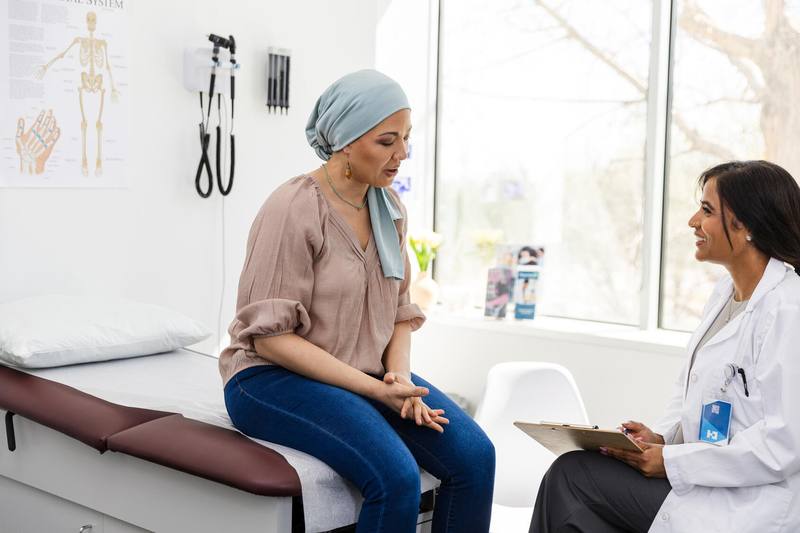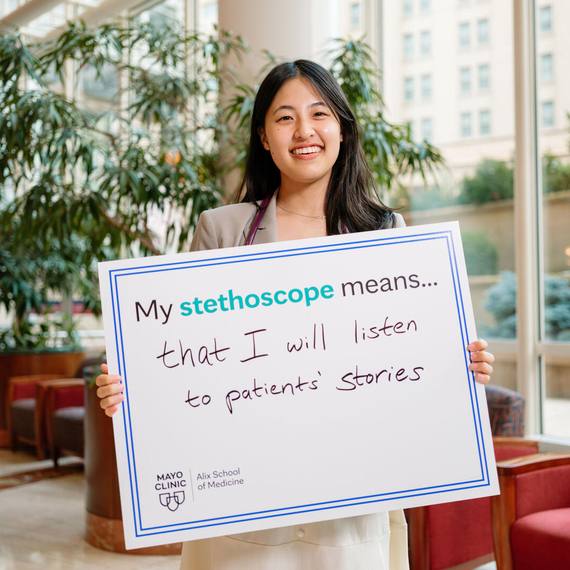-
#FlashbackFriday 1990: Mayo Nicotine Dependence Center
 This article first appeared June 1990, in the publication Mayovox.
This article first appeared June 1990, in the publication Mayovox.
Mayo Nicotine Dependence Center — What’s in a name? A clearer identity and expanded services.
Evolving to better meet patient needs, the Mayo Smoking Cessation Center is changing its name and expanding its services.
Its new name, Mayo Nicotine Dependence Center, more adequately describes what the center is about, says Dr. Richard Hurt, medical director of the center. “We’re really dealing with an addictive disorder of which smoking is only a part. Our new name allows for the recognition of nicotine as the dependence producing element in this serious disorder,” says Dr. Hurt.
It also indicates that the center deals with patients who become nicotine dependent by other means, such as smokeless tobacco, adds Dr. Hurt. Tom Gauvin, Nicotine Dependence counselor (pictured above), works with patients to develop individualized treatment plans at the Nicotine Dependence Center.
Along with its name change, the Nicotine Dependence Center will expand its outpatient group therapy program and will institute support group programs for hospitalized patients.
The center’s outpatient group program originally was designed to meet the needs of Rochester-area patients. The expanded program will include more group sessions and add daytime hours. This change will help meet the needs of Mayo’s transient patient population and of those who need a more intensive program, according to Dr. Hurt.
The Outpatient Therapy Program is designed for patients who need more intensive treatment for nicotine dependence, says Frances McClain, the center’s program coordinator.
“The program begins with a four-week treatment period that features nicotine-dependence education, group therapy sessions, individual counseling and family therapy. Patients may then participate in the Aftercare Program. This program allows changes in the intensity, content and duration of patients’ treatment programs to provide the flexibility to meet their needs,” McClain says.
The center also will expand its group programs in the hospitals to bring support systems to hospitalized patients. Group programs offer moderate-level treatment to patients who may benefit from group support and education efforts.
Patients may be referred to the Nicotine Dependence Center by physicians, or they may contact the center directly. Patients initially meet with a nicotine dependence counselor for an individual diagnostic consultation. The diagnostic evaluation examines patients’ levels of nicotine dependence and their motivation to address their addiction. The counselor then works with each patient to develop a treatment plan.
The treatment program may consist of any of the center’s services, including the expanded Outpatient Therapy Program or support groups for hospitalized patients. Other program options include individual counseling, an education program, evening group therapy, support groups and a relapse-prevention program. Patients also may be referred to other medical center treatment programs or to external resources.
The Nicotine Dependence Center’s approach to treatment combines behavioral, chemical-dependence and pharmacologic therapies. Various approaches work best for different types of patients, according to Dr. Hurt. For instance, the behavioral approach, the basis for most past smoking-cessation efforts, may work for less-dependent nicotine users but may not be effective for people with more severe addictions.
“The uniqueness of what we’re doing is that we’re incorporating what we’ve learned from smoking-cessation efforts of the past and from the field of chemical-dependency treatment, and combining it with new knowledge about the use of medications to help patients address their nicotine dependence,” says Dr. Hurt.
“I sincerely believe that we’re at the cutting edge of the treatment in this field. This wouldn’t be possible without the support of the institution and the hard work and creativity of a very dedicated staff.”
In addition, since the Smoking Cessation Center began in April 1988, the program has strived to combine clinical practice, education and research, according to Dr. Hurt. “I think we’ve gotten a good start in all three areas,” he says.
The center is involved in both intramural and extramural education, including continuing medical education and presentations at national and international meetings. And it has been involved in a transdermal nicotine patch research project, a recent demonstration project for inpatient treatment of severe nicotine dependence and the development of a nicotine dependence questionnaire.
“The ground we’ve broken is new ground. The people who have worked to develop this program have worked hard to make it successful,” Dr. Hurt says.
He cites the hard work of the original program coordinator, Gary Lauger, intervention director for the Mayo Lung Health Study, along with that of Ken Offord of Medical Statistics, Dr. Barbara Bruce of Clinical Psychology, and the Nicotine Dependence Center’s staff. Staff include program coordinator Frances McClain; nicotine dependence counselors Kay Eberman, Tom Gauvin and Stephanie Quigg; and office manager Luanne Schmidt.
The Nicotine Dependence Center is available to employees as well as medical center patients and area residents. It is located on the third floor of the Colonial Building, Rochester Methodist Hospital, and can be reached by calling 289-1930 or 1-800-344-5984.







